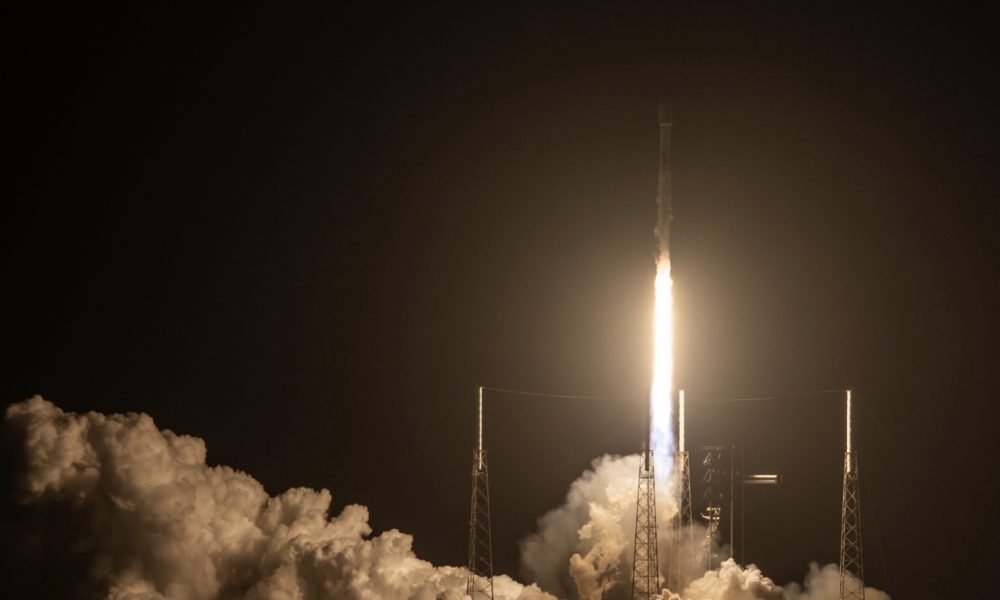
As the demand for computing power skyrockets, fueled by advancements in artificial intelligence, Elon Musk has suggested that SpaceX might leverage its Starlink V3 satellites to establish space-based data centers. Musk’s comments come at a time when companies are actively exploring orbital infrastructure as a solution to the energy and cooling challenges posed by terrestrial AI computing.
The announcement follows a report by Ars Technica on autonomous space construction, to which Musk responded on X, stating, “Simply scaling up Starlink V3 satellites, which have high-speed laser links, would work. SpaceX will be doing this.” With the Starlink V3 platform capable of up to 1 terabit per second (Tbps) throughput, it could potentially serve as the backbone for orbital computing clusters, powered by solar energy.
SpaceX’s Potential Leadership in Orbital Computing
Proponents argue that space-based data centers could significantly reduce the massive land, water, and power footprints of traditional facilities on Earth. However, critics have raised concerns about the economic viability and complexity of maintaining large-scale data systems in orbit. Despite these reservations, Musk has reiterated that the concept is a “very big deal.”
SpaceX’s impressive track record bolsters confidence in this ambitious idea. The company’s Starlink network, initially met with skepticism, now provides broadband to millions globally while generating profit. Additionally, SpaceX’s Falcon 9 rockets, renowned for their reliability, further demonstrate the company’s capability to execute challenging projects.
Growing Interest in Space-Based Data Infrastructure
Interest in space-based data storage and processing has surged recently. Former Google CEO Eric Schmidt has reportedly acquired Relativity Space, eyeing orbital data infrastructure, while Jeff Bezos has predicted gigawatt-scale data centers operating in space within two decades. SpaceX’s achievements, such as its 100th Starlink mission of the year on October 31, underscore its commitment to expanding its satellite network.
SpaceX has successfully launched 2,554 Starlink satellites in 2025 alone, contributing to a total of over 10,000 satellites launched, with nearly 8,800 currently active.
Starlink’s Expanding Global Reach
Starlink continues to be the largest active satellite constellation in history, providing high-speed, low-latency internet connectivity even in the most remote areas. The service is operational in about 150 countries, boasting over 5 million subscribers worldwide, 2.7 million of whom joined in the past year.
This expansion is supported by SpaceX’s focus on reusing boosters, enabling a rapid launch pace. The Falcon 9 rocket’s recent mission, which carried 28 Starlink satellites to Low Earth Orbit, marked the booster’s 29th flight, nearing SpaceX’s reuse record of 31 missions.
Tesla’s Technological Advances and Future Prospects
Meanwhile, Tesla, another Musk-led company, is pushing forward with its Full Self-Driving (FSD) technology. The upcoming FSD V14 update for the Cybertruck is anticipated soon, following comments from Tesla’s Director of Autopilot Software and VP of AI, Ashok Elluswamy. This update represents a significant step in Tesla’s efforts to unify the FSD experience across its vehicle lineup.
The Cybertruck’s FSD V14 update would be one of its first major over-the-air upgrades, highlighting Tesla’s commitment to enhancing its AI-driven self-driving system. The Tesla Ride program, designed to familiarize commuters with FSD technology, further exemplifies Tesla’s marketing push and dedication to safety.
“For self-driving, even if the road is painted completely wrong and a UFO lands in the middle of the road, the car still cannot crash and still needs to do the right thing,” stated Tom Zhu, Tesla’s Senior Vice President for Automotive.
As SpaceX and Tesla continue to innovate, their advancements in space-based technology and autonomous driving could redefine industries, paving the way for a future where orbital computing and AI-driven vehicles become the norm.






